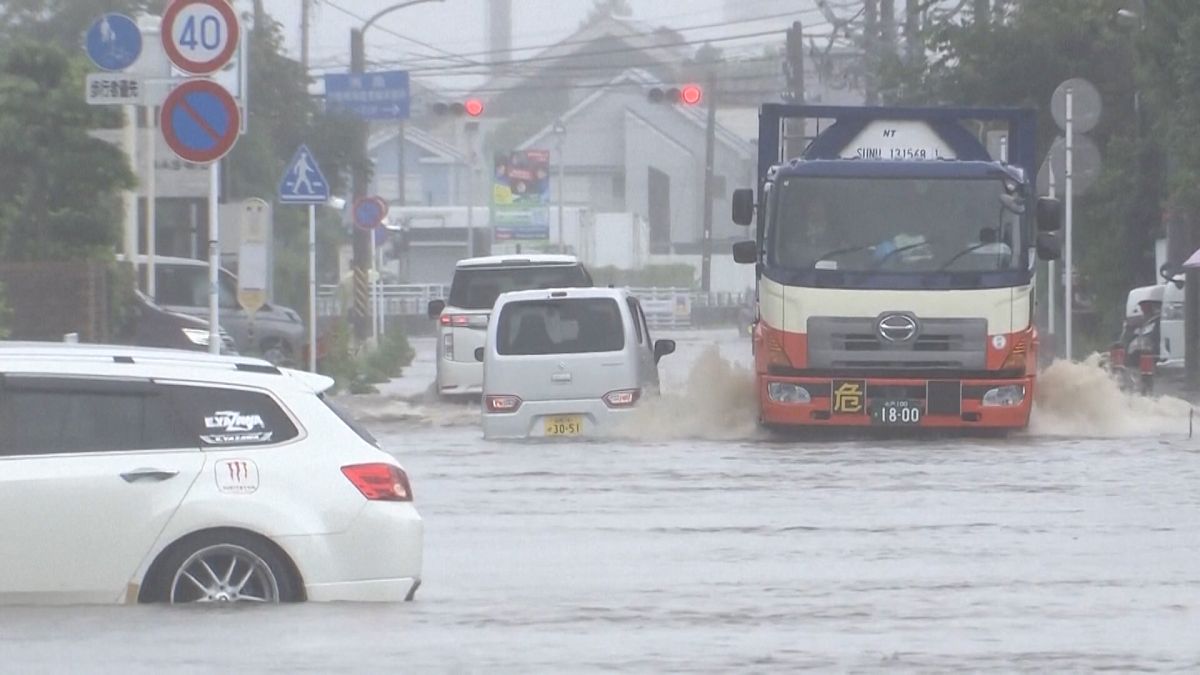In Kanagawa, west of Tokyo, floodwaters have caused chaos by stalling traffic and blocking roads. The region has been soaked by a powerful typhoon that made landfall, resulting in severe weather conditions that have disrupted daily life. Several planes at Fukuoka Airport had to abort their landings and ascend back into the air due to the storm. The Japan Meteorological Agency has issued warnings for potential landslides and forecasts up to 30 cm of rainfall in some areas, leading to continued disruptions in transport and business operations across the country. The situation remains critical as the storm continues to drench the region.
The impact of the storm in Kanagawa has been substantial, with floodwaters causing traffic jams and road closures that have created chaos in the region. The powerful typhoon that made landfall has weakened but continues to bring heavy rainfall, leading to further challenges for residents and authorities. The severe weather conditions have forced several planes at Fukuoka Airport to abort their landings, highlighting the dangerous nature of the storm. The disruptions in transport and business operations are expected to persist as the Japan Meteorological Agency warns of potential landslides and forecasts significant rainfall in the affected areas.
As the storm continues to drench the region with heavy rainfall, the Japan Meteorological Agency has issued warnings for potential landslides in Kanagawa. Forecasts of up to 30 cm of rainfall in some areas have led to concerns about the safety of residents and the impact on infrastructure. The disruptions in transport and business operations across the country are expected to continue as the severe weather conditions persist. The situation remains critical, with authorities urging residents to take precautions and stay safe amidst the ongoing challenges caused by the powerful typhoon.
The severity of the storm in Kanagawa has led to significant disruptions in daily life, with floodwaters stalling traffic and blocking roads in the region. The powerful typhoon that made landfall has weakened but continues to bring heavy rainfall, causing chaos and safety concerns for residents. The Japan Meteorological Agency’s warnings for potential landslides highlight the ongoing risks posed by the storm, with forecasts of up to 30 cm of rainfall in some areas adding to the challenges faced by authorities and residents. The disruptions in transport and business operations are expected to continue as the region grapples with the aftermath of the severe weather conditions.
The impact of the storm in Kanagawa has been felt deeply, with floodwaters causing chaos and safety concerns for residents. The powerful typhoon that made landfall has weakened but continues to bring heavy rainfall, leading to continued disruptions in transport and business operations across the region. The warnings issued by the Japan Meteorological Agency for potential landslides highlight the ongoing risks posed by the storm, with forecasts of up to 30 cm of rainfall further complicating the situation. Authorities are working tirelessly to address the challenges caused by the severe weather conditions and ensure the safety of residents amidst the chaos brought on by the powerful typhoon.
In conclusion, the aftermath of the powerful typhoon that made landfall in Kanagawa continues to bring chaos and disruptions to the region. The severe weather conditions have led to flooding, stalled traffic, and blocked roads, making it difficult for residents to go about their daily lives. The warnings issued by the Japan Meteorological Agency for potential landslides and forecasts of heavy rainfall highlight the ongoing risks posed by the storm. As authorities work to address the challenges brought on by the severe weather conditions, residents are urged to take precautions and stay safe amidst the chaos caused by the powerful typhoon.










